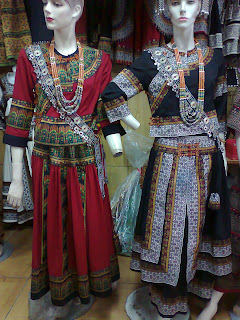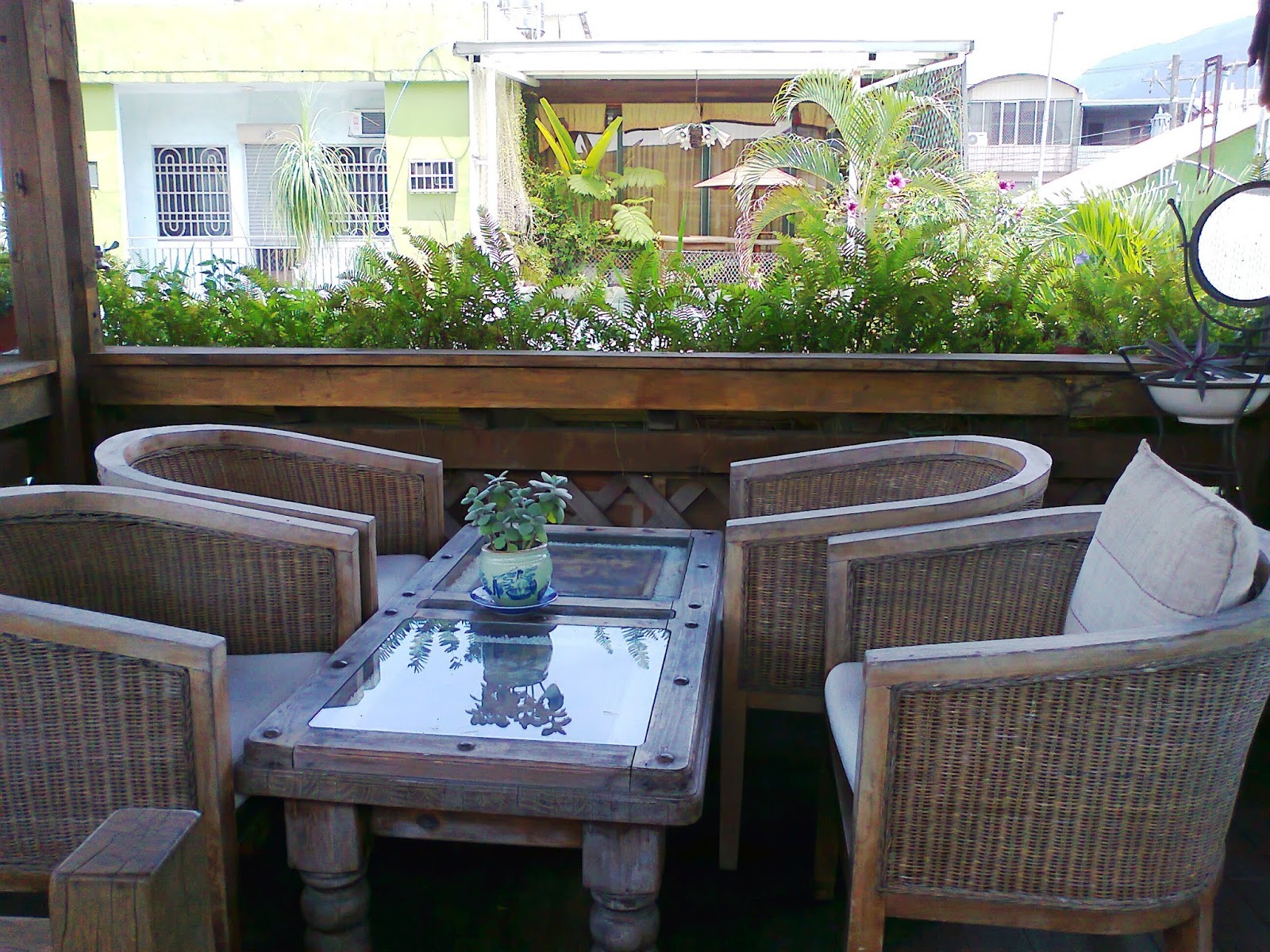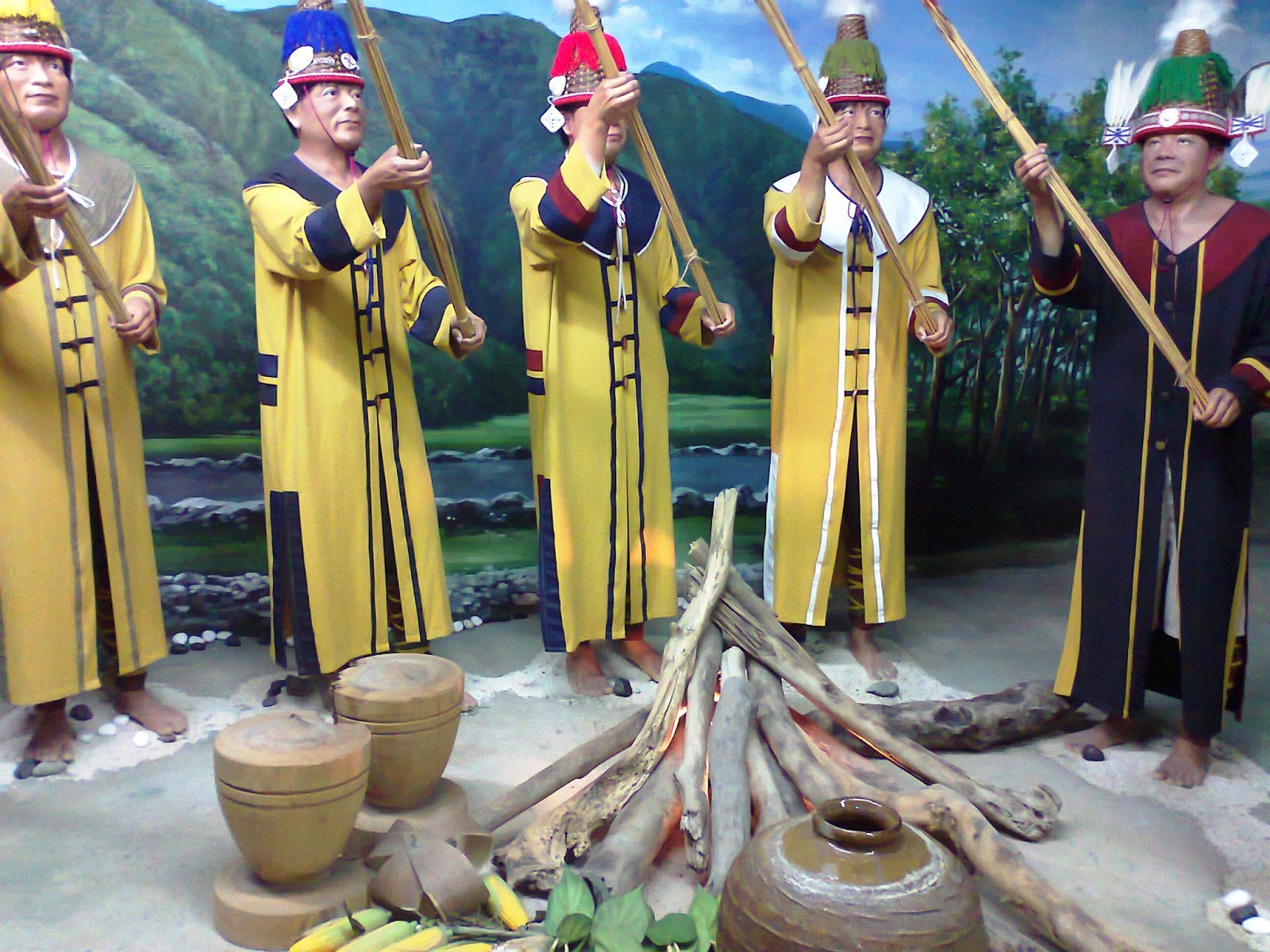Rukai tribe is strictly patrlinear and cultivate male primogeniture.
Rukai is one of the less populous tribes, count approximately 12 thousands.They occupy a relatively small area within Kaohsiung and Pingtung county borders.
The area traditionally inhabited by the Rukai tribe is surrounded by Puyuma and Paiwan tribes, leading to some similarities in traditions between these three.
Rukai's main ritual is Millet Harvest Festival taking place in July or August. Millet biscuits are baked to foretell the following year's harvest. All woman take part in a bamboo swing.
 |
| View from Sandimen village, Pingtung county |
Their main domain is farming, taro, millet and yam but they also hunt and fish.
This tribe is known for its beautiful colorful garment ornaments made from beads and shells.
Rukai also developed a social class system. The house entrence of the clan's chef has a carving of a snake or a human head. To own a pottery was a privilege of noble class, Rukai did not develop those skills and had to grade for it.
The noble class are land owners andheir houses are slightly bigger than the gentry, and the commoners.
The other classification is as follows: chief, nobility, warriors, commoners. Warrior (mainly war or hunting heroes) class is allowed to wear bear skin, boar tusks and deer antlers.
The white Lily is a symbol of sacred honor. Both men and women can wear it, and it indicates man's hunting skills and woman's purity.
 |
| Rukai traditional wedding ceremony, Sandimen village, Pingtung county |
Rukai tribe worship the hundred pattern snake. There's even a legend of the Rock of Oponohu carvings, which includes a disobeying of hundred pace snake worship custom. (It says that Rukai young man married a Bunun girl. She didn't follow Rukai customs of not eating the hundred pace snake and she was expelled from the village. She didn't stop eating hundred pace snakes though, and therefore, when she reached Oponohu Rock circle patterns emerged in every place she touched. )
 |
| the hunderd pace snake ornamen |
Rukai are also great singers although they haven't developed as sophisticated harmony and singing pattern as Bunun.
 |
| Anniversary of settling in Sandimen (from Haocha village, after flooding in 2004) |
Homes are made of stones slabs.
.JPG) |
| Sandimen village |
 |
| Sandimen village |
 |
| Many villagers offer Indigenous handicraft lessons |
 |
| Paintings of a local art teacher |
Haocha village is situated pretty high in the mountains.
Another village situated downhill is called Shui Men (水門).
It sells trditional Rukai wedding dresses, but also serves drinks snaks and traditional Rukai dishes.
The design is extremely creative combining Rukai ornaments with the atmosphere of colonial times in Vietnam (One could argue whether there was a proper colonialization in Taiwan. It was ruled for only a short periods of time: basically 60 years in 17th century- Netherlands' VOC /Dutch East India Company/ and Spanish and Japan from 1989 until 1945).
One can have a really nice walk full of breathcatching views between Shuimen village situated dowhills in the river bank, the Taiwanese Aboriginal Park, and back Haocha village situated uphills.
The entrence to the Guliu Workshop (restaurant/wedding clothes shop).
Address: 内埔鄉水門村成功路31號, Shuimen village, Chenggong street Nr 31
The shop on the map
Continuing the journey in narrow streets of Shuimen......
Taiwan Aboriginal Culture Park
It introduces all 14 officially recognized Taiwanese tribes, their history, culture, beliefs, artifacts, and housing. The Culture Park occupies pretty huge territory and tribal houses are set in the mountains.
 |
 |
| Rukai vase |
 |
| Porch outside of house |
 |
| Introduction to Haocha village |
Other useful information about Rukai tribe in Sandimen- Taiwan, the Heart of Asia website


































































































































